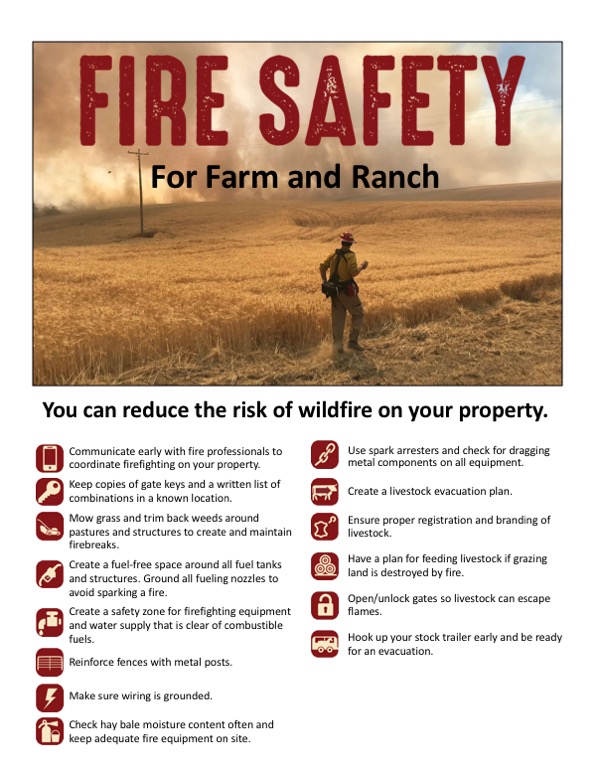Farm Fire Prevention
go.ncsu.edu/readext?834989
en Español / em Português
El inglés es el idioma de control de esta página. En la medida en que haya algún conflicto entre la traducción al inglés y la traducción, el inglés prevalece.
Al hacer clic en el enlace de traducción se activa un servicio de traducción gratuito para convertir la página al español. Al igual que con cualquier traducción por Internet, la conversión no es sensible al contexto y puede que no traduzca el texto en su significado original. NC State Extension no garantiza la exactitud del texto traducido. Por favor, tenga en cuenta que algunas aplicaciones y/o servicios pueden no funcionar como se espera cuando se traducen.
Português
Inglês é o idioma de controle desta página. Na medida que haja algum conflito entre o texto original em Inglês e a tradução, o Inglês prevalece.
Ao clicar no link de tradução, um serviço gratuito de tradução será ativado para converter a página para o Português. Como em qualquer tradução pela internet, a conversão não é sensivel ao contexto e pode não ocorrer a tradução para o significado orginal. O serviço de Extensão da Carolina do Norte (NC State Extension) não garante a exatidão do texto traduzido. Por favor, observe que algumas funções ou serviços podem não funcionar como esperado após a tradução.
English
English is the controlling language of this page. To the extent there is any conflict between the English text and the translation, English controls.
Clicking on the translation link activates a free translation service to convert the page to Spanish. As with any Internet translation, the conversion is not context-sensitive and may not translate the text to its original meaning. NC State Extension does not guarantee the accuracy of the translated text. Please note that some applications and/or services may not function as expected when translated.
Collapse ▲With current wildfires occurring and the N.C. Forest Service issuing a burn ban for the entire state of North Carolina, below is information about farm fire prevention.
To decrease the chance of your operation being susceptible to a wildfire:
- Remove vegetation from within at least 30 feet of residences and farm buildings.
- Create noncombustible zones around spaces where equipment, fuel, hay, and chemicals are stored.
- Create and maintain appropriate types and sizes of fireguards around pastures and crops.
- Keep roofs free of combustible debris and materials.
- Remove or isolate highly flammable and combustible materials and accelerants.
- Develop a plan to evacuate livestock, or maintain an area where livestock can be moved, such as a plowed or heavily-grazed field or pasture with water and shade.
- Work with your fire department to make sure an adequate water supply is available and that obstructions are removed for first responders.
- Provide a list of stored hazardous materials to your fire department, and update regularly.
- Post signs and enforce “no smoking” bans in barns and around machinery and combustible and flammable materials.
In the event of a fire:
- DO NOT PANIC.
- Call 911. Tell the dispatcher the type of fire (e.g., barn, shop, field), and give them your address and directions to your farm.
- Tell them the status of the fire – is smoke showing, is the building fully engulfed in flames, etc. Notify them if there are any people injured or trapped.
- Inform them if there are animals involved. Note the types of animals, if the animals are loose or contained, and how many are still in the building.
- If the driveway is difficult to see or find, send someone out to meet the fire department.
- Fire departments have delayed response time due to poor directions.
- Shut off all power sources to the building.
- DO NOT enter the building! If you are the only one present, no one will know you are inside. If the roof is on fire, it may collapse at any time.
The National Wildfire Coordinating Group has a Fire Safety For Farm and Ranch flyer that you can print with helpful information. 
If you have further questions about Farm Fire Prevention or need more information, contact Bryan Hartman at bkhartman@ncat.edu or (336) 593-8179.




